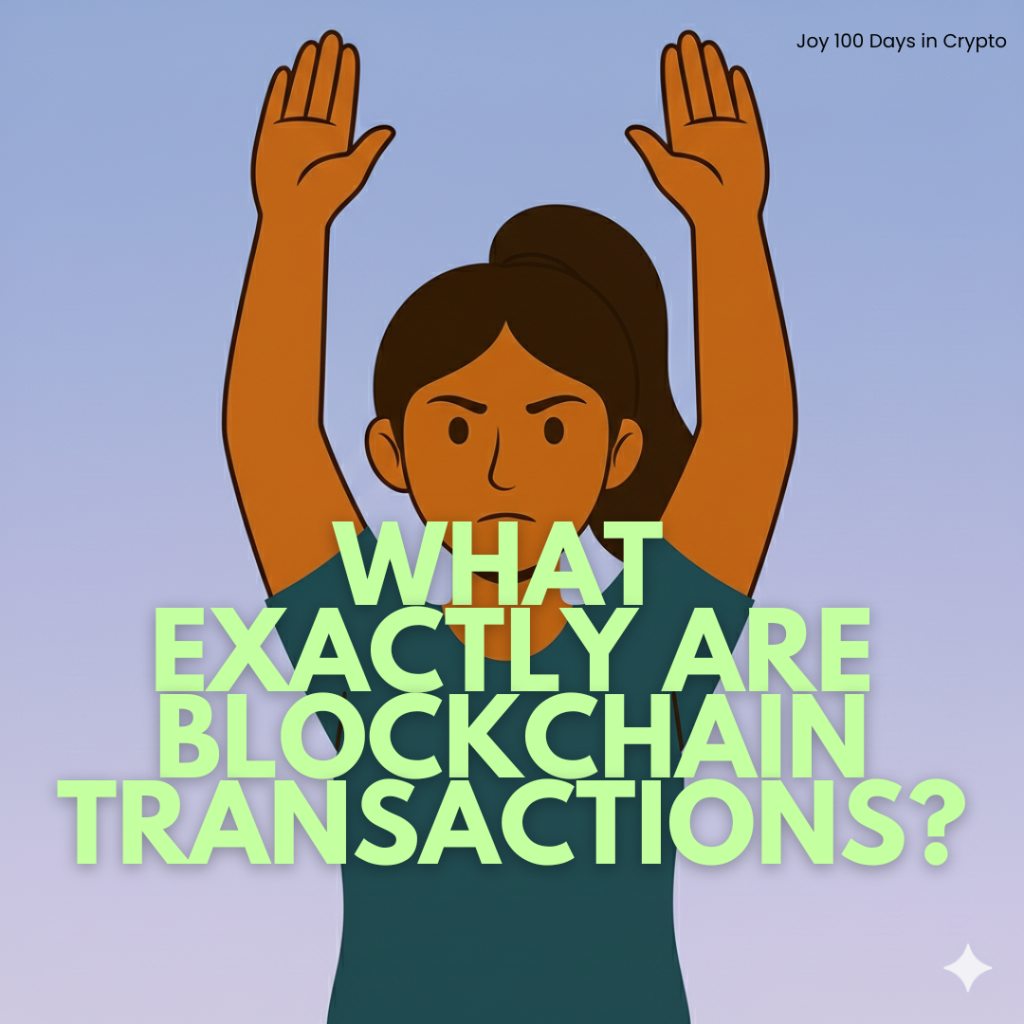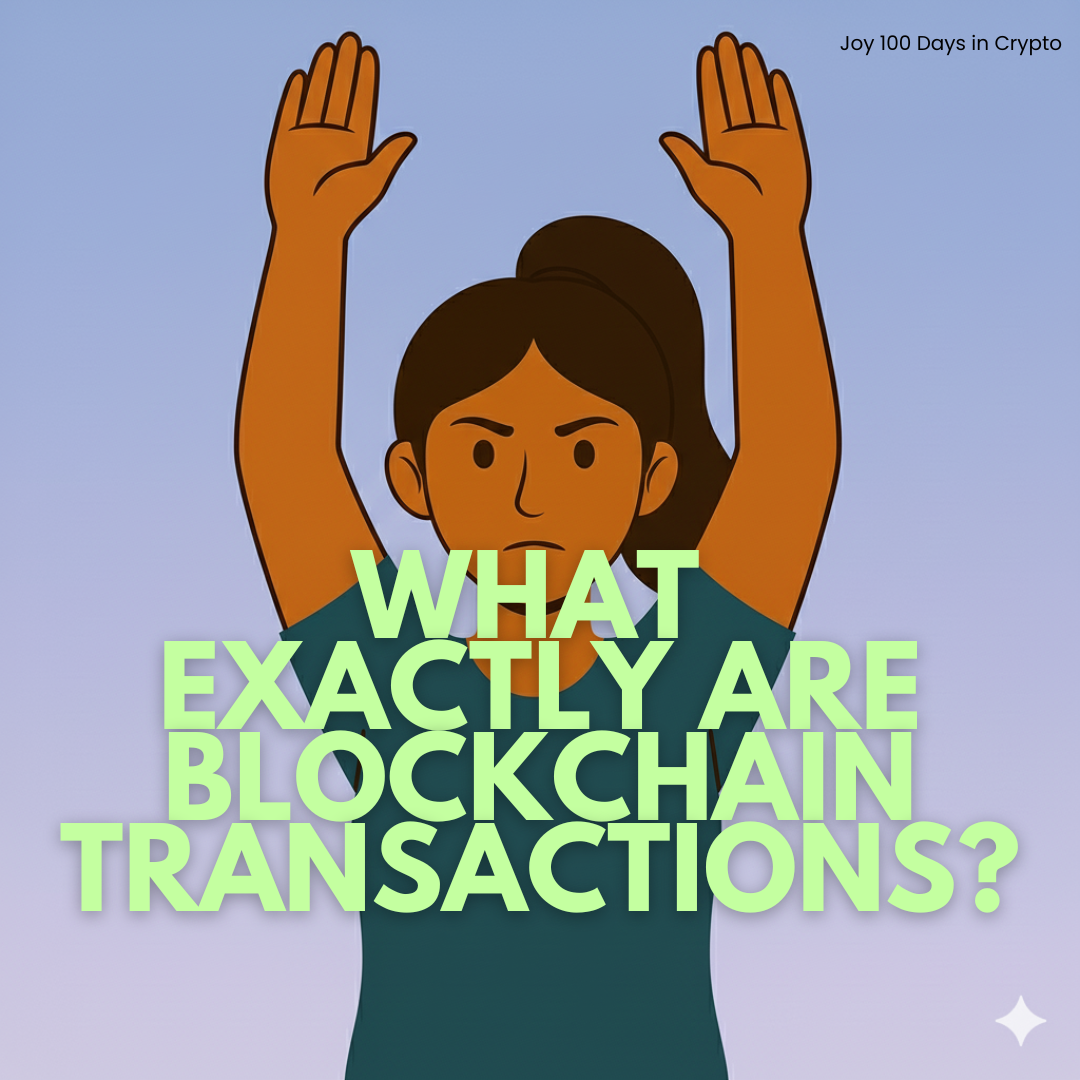By now, we’ve already covered a lot:
👉 Day 3 – Understanding Blockchain (the shared digital ledger that records everything)
👉 Day 10, we dug into crypto wallets—your hot and cold storage.
👉 Day 11, we learned about public keys and private keys (like your wallet address and your ATM PIN).
👉 Day 12, we met the seed phrase—the master key to your wallet.
👉 Day 14, we talked about decentralization and why only you hold the keys.
👉 And just yesterday, Day 15, we introduced gas fees—the little cost you pay to make things move on the blockchain.
Now, let’s bring it all together and answer the big question:
What exactly happens in a blockchain transaction? And what are you really paying for?

Every Transaction is a Digital Receipt
Think of a blockchain transaction like buying something at the grocery store. You pick your items (sending or receiving crypto), you line up at the cashier (the blockchain network), and once it’s processed, you get a receipt (your transaction record).
But here’s the twist: in crypto, no one cashier is in charge. Instead, there are thousands of “cashiers” (miners or validators) all working together to confirm your transaction.
What You’re Actually Paying For
Remember those gas fees from Day 14? That’s what covers the cost of making your transaction official. You’re basically paying for:
- Validation – Someone has to check your transaction is legit (no double spending, no fake coins).
- Security – Miners or validators use computing power or staked tokens to keep the network safe.
- Permanence – Once confirmed, your transaction is written into the blockchain forever, like ink on paper.
So when you send crypto, you’re not just moving digital money, you’re paying for trust, security, and record-keeping.
Why This Matters to You
Here’s the beauty: once your transaction is confirmed, nobody can tamper with it. Not a bank, not a government, not even you. It’s locked into the blockchain forever.
This connects directly to what we learned in Day 13 about decentralization, you don’t need a middleman. You and your wallet (from Day 10 to Day 12) can interact directly with the blockchain, powered by miners or validators, and that’s where your fees go.
In Short
A blockchain transaction isn’t just “sending money online.”
It’s:
- Verified by a community.
- Secured by cryptography.
- Paid for with gas fees.
- Recorded forever.
So the next time you send crypto and grumble about the fee, remember—you’re not just paying to move coins. You’re paying for the peace of mind that your money got where it needed to go, safely and permanently.
👉 Tomorrow (Day 16), we’ll zoom in on who exactly makes all this possible: miners and validators, the real MVPs of the blockchain.

Leave a Reply